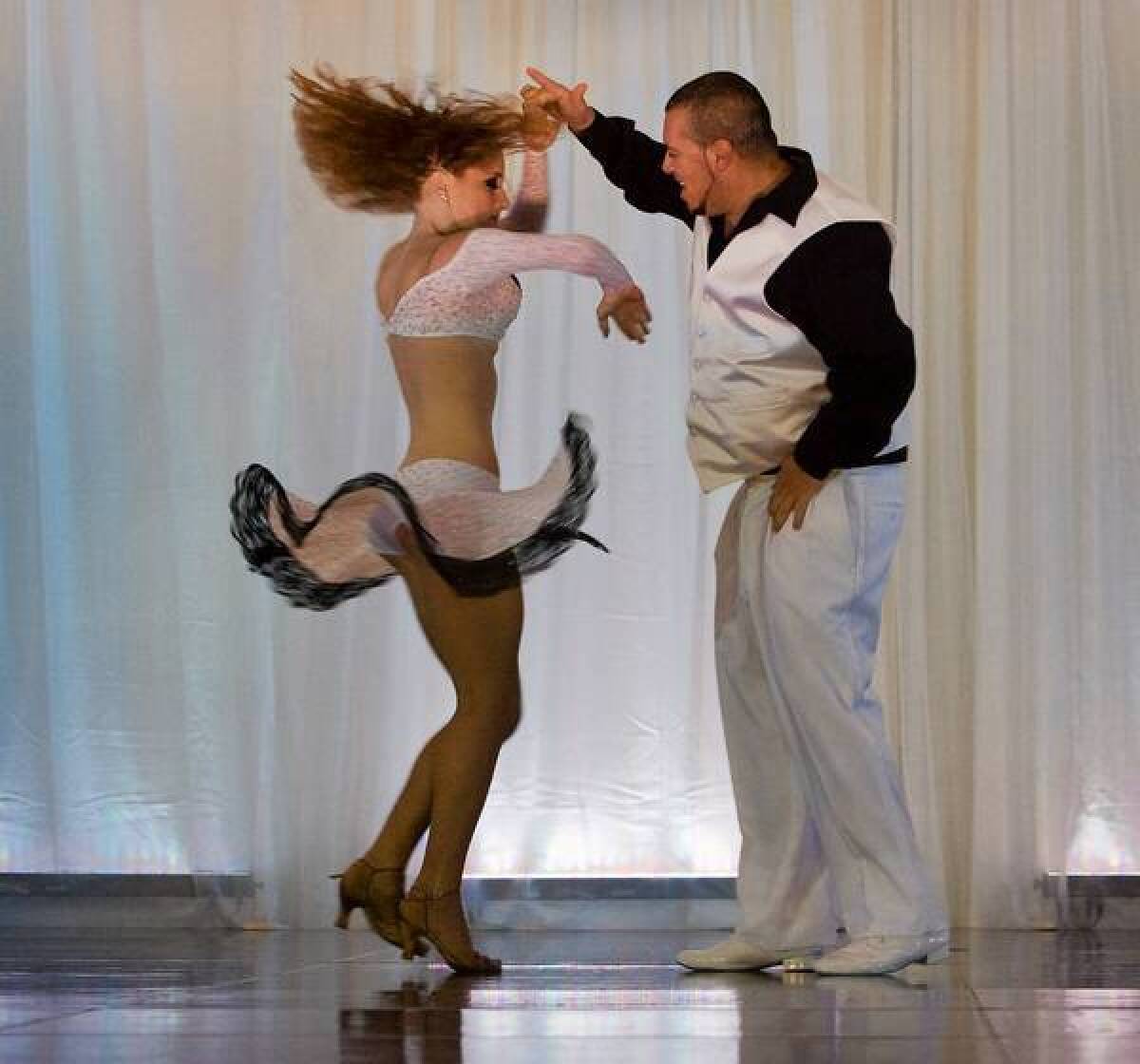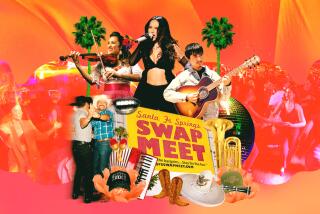L.A. Salsa Congress gives bachata room to dance

Salsa dancers know that it’s crucial to have a partner with good rhythmic chemistry. The same could be said of salsa music, a flamboyant genre that can be picky about sharing the floor with others.
So it’s noteworthy that at the 15th annual L.A. Salsa Congress in downtown Los Angeles, which begins Wednesday and runs through Sunday at the Westin Bonaventure hotel, salsa will yield the spotlight at times to its more rustic Caribbean musical cousin, bachata.
A guitar-driven dance music derived from Cuban bolero that first blossomed in the Dominican Republic in the 1960s after the fall of the Trujillo dictatorship, bachata lately has soared in popularity across many parts of Latin America and the United States. The bachata master Joan Soriano will perform at the L.A. Salsa Congress, and movie director Adam Taub’s 2009 documentary about Soriano, “The Duke of the Bachata,” will be screened. One of the hotel’s dance salons also will be devoted to bachata.
Albert Torres, the event’s irrepressible founder and presenter, said he wanted this year’s festival to demonstrate a spirit of inclusiveness that reflects salsa’s changing personality.
“There’s such a large population now that loves bachata,” Torres said in a phone interview last week. And not only bachata, he hastened to add: The festival also will turn some of its attention to kizomba, another of salsa’s far-flung relatives of the African diaspora, whose popularity has been spreading beyond its Angolan home base.
“All over Europe, especially Spain and Portugal and now in Italy, it’s a boom,” Torres said of kizomba, which combines traditional African semba and kilapanda with merengue and is generally sung in Portuguese.
Like bachata and kizomba, salsa has migrated long distances and attracted a following in places far removed from its Afro-Caribbean origins. Salseros from 50 countries across Europe, Latin America, Asia and Africa will converge at this week’s festival, a five-day marathon of musical performances, prize-giving, workshops, panel discussions and, of course, dancing.
The lineup of musicians will include Orestes Vilató, Johnny Polacno y Su Conjunto Amistad, and Colombia’s Grupo Niche, which will perform a tribute to its founder, Jairo Varela, who died last year. On Sunday, Richie Ray will lead a “mambo Mass,” and at one of the education workshops percussionist Jose Madera will team with the pianist, arranger and Grammy nominee Oscar Hernandez to explore the history of the musical form.
Also appearing will be Izzy Sanabria, a.k.a. “Mr. Salsa,” who as a magazine publisher and TV host in the 1970s helped define the salsa subculture and spread its gospel far beyond New York and San Juan. Sanabria, the official emcee of the Fania All-Stars, will assist Torres with hosting duties this week.
Its collective star-wattage is one measure of how the festival has grown since Torres launched it with about 1,000 attendees at the Hollywood Park Casino in 1999. Today, the congress aspires to attract not only hard-core devotees and students of the spinning, deep-dipping art form but also more casual enthusiasts.
“There are people who are really into the music and they want to know all about the music, all about the artists’ history. And there’s other people that they just want to do the dancing,” said Kathy Diaz, host of the long-running salsa-centric radio show “Canto Tropical” on KPFK-FM (90.7). “Back when I started dancing you didn’t go take classes. You learned by going out — sort of the hard way. The congress kind of formalized things.”
Through his company, Albert Torres Productions, Torres has done as much as anyone alive to promote salsa, sponsoring dozens of annual events from Zurich to Japan and South Africa. He said he now prefers the term “festival” to “congress” because it feels more inclusive.
Aware that salseros can be wary of parvenu dance forms, promoters like Torres have endeavored to expose salsa audiences to the bluesy roots of traditional bachata, which differs from the more pop-oriented and R&B fusions of latter-day artists like the New York group Aventura and its former frontman Anthony “Romeo” Santos.
“When I got started producing bachata around 2001 the salsero community was completely against it. They saw it as this new upstart music that was disrupting salsa,” said Benjamin de Menil, head of the independent world music label iAso, whose “Bachata Roja Legends” compilation albums helped popularize the genre.
But in recent years that attitude has largely disappeared, he added.
“Many of the dance schools and the dance teachers that had been champions of salsa have embraced bachata, and now are the ones that are bringing bachata to new places,” said De Menil, who’ll be attending this week’s events.
In the long run, adding new rhythmic textures can only make the salsa party better than before, said singer-composer Ismael Miranda, who’ll be performing this week.
“The most important part of all this is the involvement of young people who are turning into dancers of this music,” he said. “So I believe that it has been a blessing.”
-------------------------------------
L.A. Salsa Fest
When: Wednesday through Sunday
Where: Western Bonaventure Hotel, 404 S. Figueroa St.
Info: (310) 445-9705, https://www.mysalsacongress.com
More to Read
The biggest entertainment stories
Get our big stories about Hollywood, film, television, music, arts, culture and more right in your inbox as soon as they publish.
You may occasionally receive promotional content from the Los Angeles Times.











